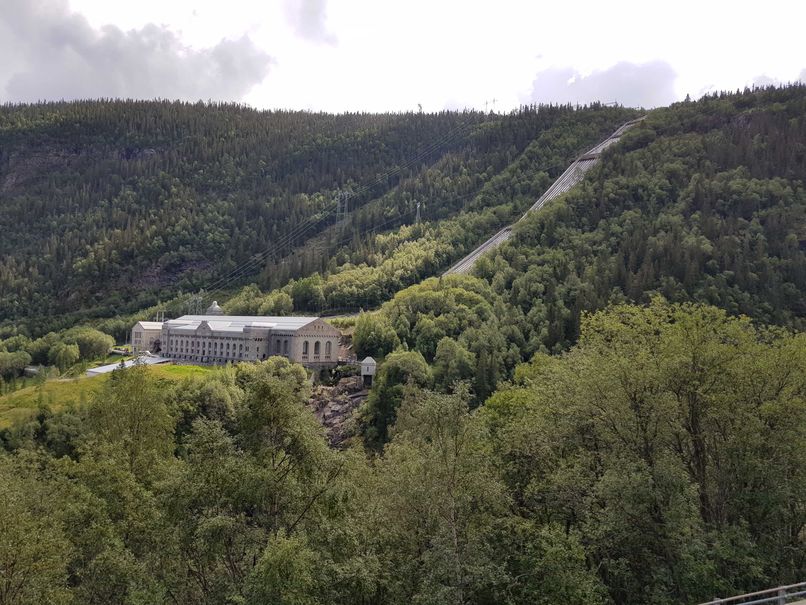 The events at the heavy water cellar at Vemork have been called one of the most successful acts of sabotage in World War II. The cellar was the target of Norwegian soldiers under British command in the night between 27th and 28th of February 1943.
The events at the heavy water cellar at Vemork have been called one of the most successful acts of sabotage in World War II. The cellar was the target of Norwegian soldiers under British command in the night between 27th and 28th of February 1943.
After years of excavation and planning the original cellar will officially open June 18th 2022. A new museum facility will cover and protect the cellar and tell the story of the historical events, at the site where they took place.
The heavy water cellar located at the Vemork hydroelectric power plant near Rjukan, Norway, is a historic national heritage site of significant national and international importance. When the cellar reopens in June, visitors will experience the history of the famous sabotage action that took place at Vemork 79 years ago.
Anna Hereid, Director of Norwegian Industrial Workers Museum (NIA) says:
– In the light of present days Europe, it is vital that we place great emphasis on telling the story about past times. As the scene of one of the most spectacular events in the war history of Norway, the heavy water cellar is a major destination for education in history and a monument to the Second World War. Surrounded by a dramatic landscape the cellar and the new museum will be a place for learning and reflection, where innovative design and technology will ensure engaging means of conveying history.
A successful act of sabotage from young men
Operation Gunnerside in February 1943 was an extraordinary courageous act of sabotage. The Hydrogen Production Factory at Vemork was fortified and heavily guarded in a nearly inaccessible part of Norway. Penetrating this inaccessible location in the frozen mountains of Telemark, Norwegian commandos successfully destroyed the heavy water production that might have made it possible for the Nazi regime to develop an atomic bomb.
The operation was carried out without a single shot being fired, and the saboteurs escaped. Some of them went skiing for 17 days to get over to Sweden.
The spectacular story of the heavy water sabotage is known worldwide, especially through movies like Operation Swallow: The Battle for Heavy Water from 1948, The Heroes of Telemark by Anthony Mann from 1965 and The Heavy Water War from 2015.
The leader of the action Joachim Rønneberg was 23 years old at that time. He has repeatedly stated that the cellar where the action was carried out must be made available to the public. That’s what is happening now. From June 2022 the audience will learn about one the most successful acts of sabotage from WWII at the site where they took place.
An archaeological project of great value
The heavy water cellar (1935) was part of the Hydrogen Production Factory at Vemork (1929). The factory was demolished in 1977, but in September 2016 the Norwegian Industrial Workers Museum (NIA) began an excavation using an industrial archaeological excavation method to find the original site of the WWII sabotage effort. On October 5th in 2017 the historical discovery was made; the heavy water cellar was found – intact and in very good condition.
Dissemination of the findings of the excavation uncovered unique historical and cultural wartime/industrial heritage elements. The site will be of great value for organizations and individuals, local and regional as well as international, for researchers, educators, tourists as well as for the public in general.
A special focus of the industrial archaeological excavation was to gain more knowledge of the specific target of the Norwegian saboteurs in the heavy water cellar. All that was found has been kept intact for better understanding, observation, and research by current and future generations.
The largest power plant in the world
The first hydroelectric power plant at Vemork was an important part of Norsk Hydro’s industrial adventure in Notodden and Rjukan, and a key element in the development of the 2ndIndustrial Revolution in Norway. The power plant was the world’s largest when it was put into operation in 1911.
The 2nd Industrial Revolution contributed to changing the young nation of Norway and thus creating what still stands as one of the world’s best examples of a modern democratic welfare society.
A new museum facility complements the world heritage
The new museum facility has been constructed above the historic heavy water cellar and will present the cellar in its actual original state, as part of NIA’s work to preserve and present cultural heritage.
The industrial heritage of Rjukan and Notodden was entered on the UNESCO World Heritage List in July 2015.
Access to the heavy water cellar:
- · Official opening: The opening of the heavy water cellar will take place June 17th–19th, the opening ceremony on Saturday, June 18th at one p.m.
- · Preview: Press is invited for a preview Monday June 13th.

















